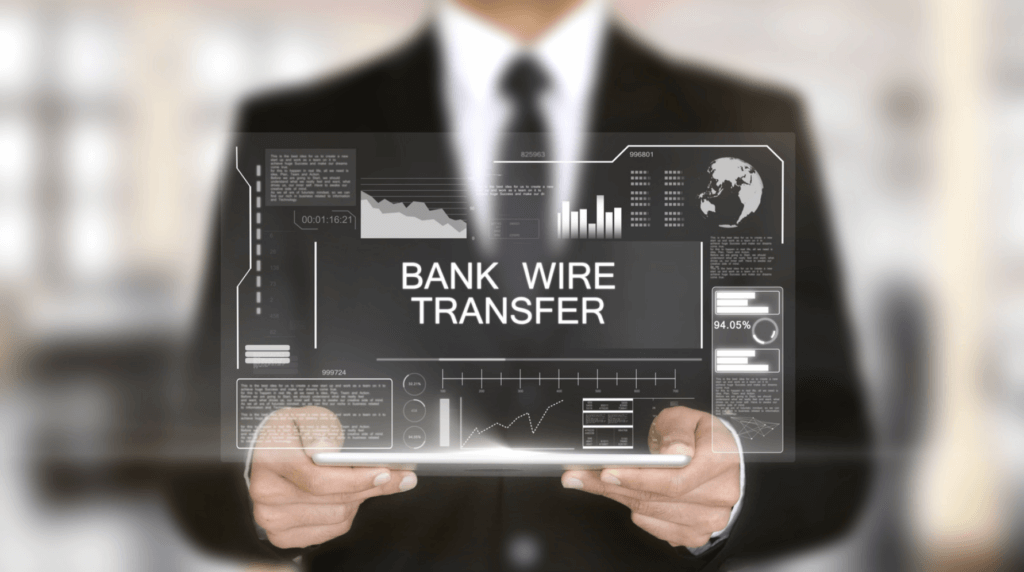Wire transfer and ACH are two of the most popular payment methods that consultants and small business owners consider. Selecting the right payment option is an important business decision. Of course, there are other ways to get paid – like cash and checks – but those older methods are slow and poorly suited for today’s environment. Let’s further explore the differences to help you make an informed choice.
- Comparing Wire Transfer Vs ACH
- What are the pros and cons of using wire transfer payments?
- What are the pros and cons of ACH deposits for business owners?
- Wire transfer vs. ACH: which is better for you?
- Protecting your business from high payment costs
1. Comparing Wire Transfer Vs ACH

As small business owners, freelancers and consultants, you are responsible for every part of your business. One area that you might not have thought about much is how you get paid. Two of the most common payment options are wire transfer and ACH.
ACH is a commonly used mechanism for employee payroll in many companies. In the United States, many people use the phrase ‘direct deposit’ to refer to payment through the ACH system. In brief, ACH means Automated Clearing House. It describes a bank account-to-bank account electronic payment.
Wire transfers are a bank service commonly used to transfer money across international borders. Today’s international wire transfer systems were created many years ago. As a result, this payment system is slower compared to digital options.
2. What are the pros and cons of using wire transfer payments?

Compared to ACH, a wire transfer is one of the most popular ways to transfer more significant amounts of money across borders. Making a payment via wire transfer is a robust and well-documented process.
The fixed fee pricing of wire transfers makes this option particularly popular for more significant amounts. In addition, wire transfer payments are highly developed and understood by many companies. As a result, there is less need to explain wire transfer payments to employees and staff.
To fully understand wire transfers, it is necessary to identify the downsides of this popular payment method.
In contrast to newer payment methods, wire transfers are often criticized for their slow speed. Payments can take several business days to be completed. For a small business with cash flow concerns, having to wait several days to get paid is unattractive. In extreme cases, delays in getting paid by a customer might cause you to miss essential obligations like rent.
High cost is another con for wire payments. Wire transfer fees are relatively expensive, especially for smaller payments. Bankrate reports that outgoing international wire transfer fees are around $35 on average. If a client is paying you $350 or less, the wire transfer fee would equal 10% of the invoice.
There are also additional fees for receiving wire transfers at most banks. As a result, you may decide to add a surcharge to your invoices to offset this expense. If clients dislike that practice, you might have to absorb it as a cost of doing business.
The final disadvantage of wire transfers is less competition and choices. There are relatively few companies that are equipped to offer wire transfer services. By and large, banks are the primary option for getting wire transfer services. Unfortunately, many banks have a poor level of customer service.
If wire transfers are your only option to get paid by clients, you might be frustrated with your lack of choices.
With those points in mind, let’s see how to wire transfer payments compare to ACH.
3. What are the pros and cons of ACH deposits for business owners?
ACH is one of the most popular ways to get paid domestically in the US. As a payment method, it has attractive benefits and some downsides to keep in mind as well.
ACH is generally less expensive than a wire transfer. In most cases, there is no charge to receive an ACH payment. However, your client may have to pay service fees to issue the payment to you.
An ACH payment also offers security benefits. Unlike cash or checks, stealing or interfering with an ACH payment is challenging. Of course, ACH and other digital payment systems are still vulnerable to technical failures and hacking. Thankfully, both the wire transfer and ACH systems have robust security measures.
In addition, ACH is the most popular way to pay employees in the United States. According to Chron.com, 82% of US businesses pay their employees using ACH or equivalent methods. Therefore, most companies already have trained employees and business systems to issue ACH payments. That is valuable to you as a business owner because you will not have to spend time explaining how you would like to get paid.
In terms of speed, ACH is similar to a wire transfer. It usually takes one to three business days to issue an ACH payment.
While better than wire transfers in some ways, there are a few disadvantages to using ACH.
Traditional ACH systems and services are focused on domestic payments. That means a US company can use a US ACH service to pay people in the US. While it is possible to issue international ACH payments (i.e., “international ACH transactions or IATs), this capability is relatively uncommon.
There is also potentially higher administrative work involved in using ACH payments. If you switch to a new bank, you would have to inform all of your clients to update their payment information. The hassle factor of updating ACH profiles can be a significant disadvantage if you value the option of switching banks to get the best deal.
5. Wire transfer vs. ACH: which is better for you?
The following tables briefly summarize the pros and cons of each payment option.
Payment Method: ACH
S.No Pros Cons 1 Ideal for domestic payments (i.e. payments within the United States) Not well suited to international payments 2 Highly affordable (cost of less than $1 per transaction is available) Daily ACH limits (e.g. $10,000) make it less suitable for large invoice payments 3 Widely understood payment method that most companies already know how to use Payments can take up to 3 days to arrive 4 Robust security measures keep payments safe Payment Method: Wire Transfer
S.No Pro Con 1 Preferred for international payments Fewer companies use it for domestic payments 2 Fees may be waived for larger payments (e.g. Fees are usually charged to send and receive wire transfers – this can be very expensive for smaller payments (e.g. under $500) 3 Strong security measures protect wire transfers from interference Smaller companies may not be familiar with wire transfers and may not want to use it. 4 – Payments can take up to 3 days to arrive
Selecting the right payment option for your company depends on a few factors. Let’s take a closer look at each one.
5.1. Where are your clients located?
If you are located in the same country as your clients, then ACH may be a good option. The reverse is also true. Wire transfers are a better option if you have one or more clients in other countries. Of course, you may also choose to have various payment services (i.e. ACH for some customers and wire transfers for others).
5.2. How large are your typical invoices?
Wire transfers are sometimes viewed as the preferred method to make large payments.
Let’s say one client bank with JP Morgan Chase. JP Morgan Chase does not charge a fee for sending international wire transfers over $5,000 US. On the other hand, payments under $5,000 have to pay a transaction fee. There is also a daily limit, estimated at $250,000, on the amount that can be sent by wire transfer. If you regularly invoice $10,000 or more to your client, they may find it convenient to pay you by wire transfer if you are in a different country.
In contrast, ACH payments are often more suitable for smaller domestic payments. JP Morgan Chase, one of the largest US banks, has a $25,000 daily limit on most ACH accounts (some accounts have a higher limit. As a result, smaller companies with one or two business bank accounts might find it difficult to pay a large invoice in a single payment.
5.3. What fees does your bank charge for receiving payments?
Banks vary considerably in how they price their services. Some banks charge a service fee for every transaction, while others have a flat rate plan. In general, most banks charge a fee to receive a wire transfer payment, and most do not charge to receive an ACH payment.
Now, take a moment to estimate how much you pay annually in bank fees. You received 100 wire transfer payments from overseas clients last year. It’s entirely possible that your bank charged you $20 to process each payment (i.e. $2,000 per year).
If you are paying $2,000 a year to receive payments from clients, it’s smart to shop for other options. Wire transfers and ACH are not your only options to get paid by international clients.
5.4. What alternatives are there to getting paid by ACH and wire transfers?
So far, this guide has exclusively looked at ACH and wire transfer payments. While popular, those are not your only payment options. You can also use CheckYa to get paid! In addition to processing payments, CheckYa is also a powerful invoice tool. You can use it to create and issue invoices to your clients and get paid. The best part is that CheckYa is faster and more affordable than traditional payment options.
5.5. How do I convince my clients to change payment methods?
Changing how you get paid often involves a conversation with your client. For example, your client’s accounts payable department may have established processes for issuing ACH and wire transfers. Your client may not be equipped to pay you in any other way.
There are a few ways to approach this dilemma. The simplest option is to let current clients continue to pay you in the method they are most comfortable with. In this case, you would require all new clients to pay you with your new payment method (i.e. CheckYa). Over time, most of your business would switch to your preferred payment method. While slow, this method has minimal risk.
The second method is to insist on changing your payment method with all clients. This approach carries some risk. For example, a Fortune 500 company may have corporate policies restricting how and when they pay vendors. That said, you may be able to get an exception to a corporate policy if you negotiate with the right person. While possible, keep your entire client relationship in mind. If changing payment methods irritates your most valuable client, you may want to avoid raising this question.
6. Protecting Your Business From High Payment Costs
You’re exposed to major risk when your business relies on a single process or service. Imagine if a single client accounted for 70% or more of your revenue. Losing that client would hurt your income dramatically. Similarly, having multiple payment services in place is wise, so you never need to worry about getting paid.
CheckYa is a fast, low-cost way to get paid by clients worldwide. Today, you only pay PayPal or Stripe processing fees to receive payments. For smaller payments like $100 or $500, CheckYa is one of the most affordable options. You can get paid in your currency of choice, cryptocurrency, and send invoices directly from CheckYa. That means less paperwork to get paid for your client’s work.